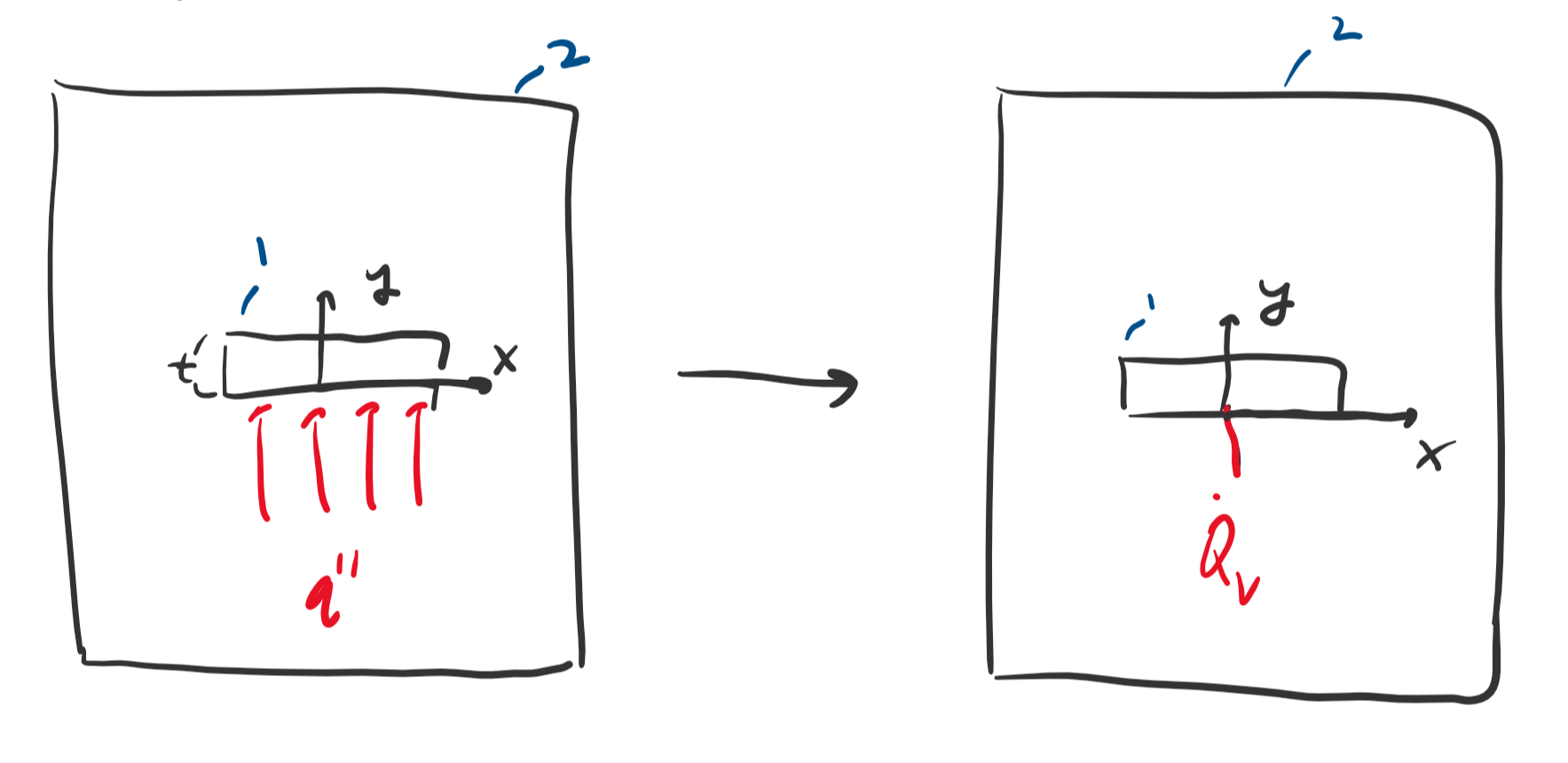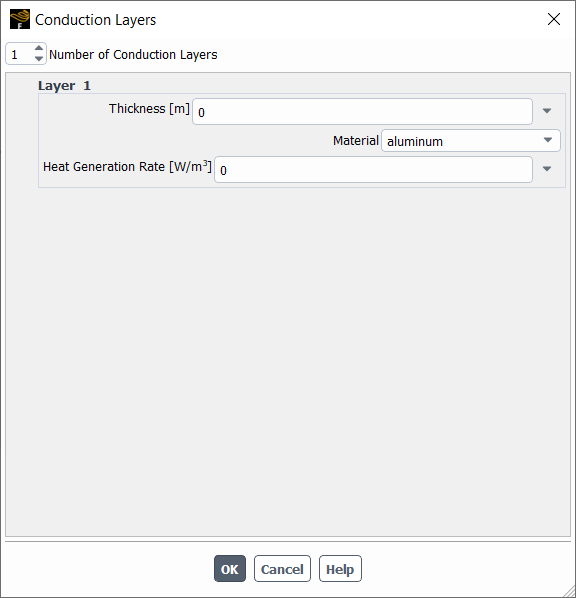-
-
July 24, 2023 at 11:27 pm
Jonathan Park
SubscriberI have a 2D CFD model where rectangle 1 is inserted within rectangle 2. Rectangle 1 represents the cross section of a material with finite length and width, and rectangle 2 represents the cross section of a vacuum chamber where the material is placed. I have to model the heat flux boundary condition onto the surface of rectangle 1 as a heat source boundary condition. Could there be a way to convert heat flux to heat source using UDF code? Heat flux is non-uniform, and I can't really convert heat flux to heat source boundary condition by hand because this is a 2D problem.
-
July 25, 2023 at 9:30 am
-
July 25, 2023 at 6:32 pm
Jonathan Park
SubscriberI only have a given non-uniform heat flux distribution as a function of x and y, which is set onto the material. Howeer, in my problem, since the external surface of the material is the internal surface of the vacuum chamber, I must treat treat the incoming heat flux as heat source occuring within the material.
I understand that if I had a heat source given in my problem, I would directly use Heat Generation. However, I’m only given a heat flux which must be converted to heat source.
For Shell Conduction, if I’m not given a heat source but just a heat flux. In ‘Heat Generation Rate’, can I just divide heat flux by the thickness even if the heat flux q”(x,y) is non-uniform, 2D, dependent on x and y? Does shell conduction consider takes account of both directions normal to the wall and along the wall (or both x and y directions) ? I thought shell conduction only considers heat flux normal to the surface.
-
July 26, 2023 at 7:53 am
Rob
Forum ModeratorYou need to figure out what's in the model. If the block is present in both cases, you can use a source into the solid volume. Or you add a flux through a surface, a profile may be suitable for that.
Shell conduction means heat can conduct along a thin wall, otherwise it can't. The heat generation doesn't need shell conduction and is a way to get heat into a thin wall: typical use case could be underfloor heating or heating jackets on pipes.
-
July 26, 2023 at 6:03 pm
Jonathan Park
SubscriberYes, the block is present in both cases. Both the reactor (larger rectangle) and substrate (smaller rectangle) are cylindrical cross sections. The substrate has a thickness of 5 mm, so it's thin. Is there a way to apply source into the solid volume (W/m^3) if I only have the non-uniform heat flux profile (W/m^2)? The reason I can't apply the heat flux is because the external surface of the substrate is the internal surface of the CFD model of the reactor. Therefore I must convert my heat flux distribution into a volumetric heat source.
-
July 27, 2023 at 9:07 am
Rob
Forum ModeratorIf you know the respective volume & area then yes, you can get the correct number of Watts into the system. What you can't do is add a volume source bounded by a heat flux boundary: the source volume will either be 1K or 5000K as Fluent hits the solver (default) limiters.
-
- The topic ‘Converting heat flux to heat source using UDF code’ is closed to new replies.



-
4663
-
1545
-
1386
-
1230
-
1021

© 2025 Copyright ANSYS, Inc. All rights reserved.










